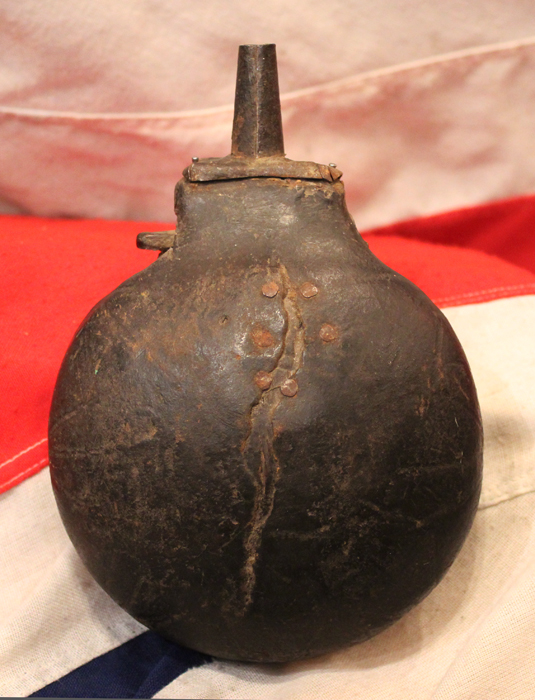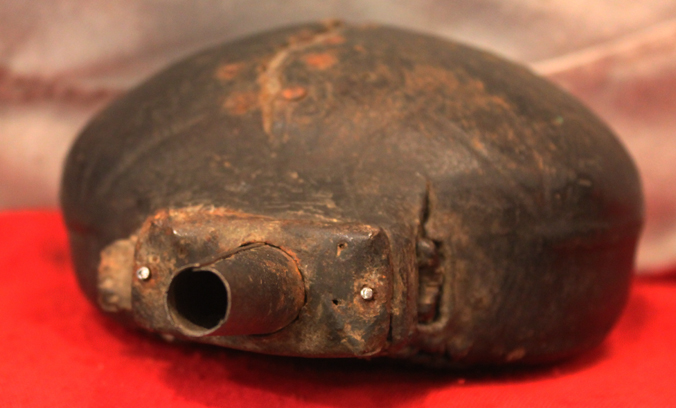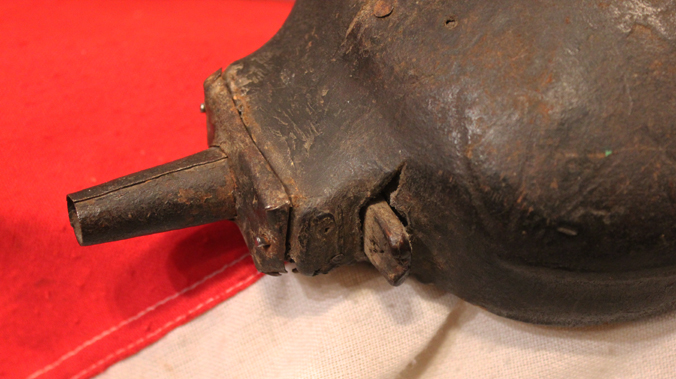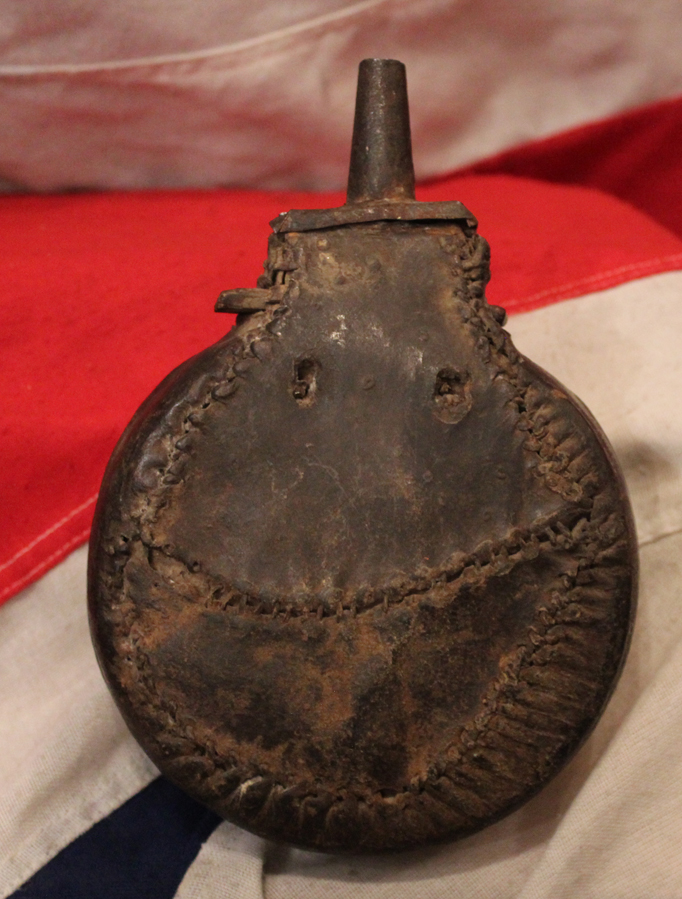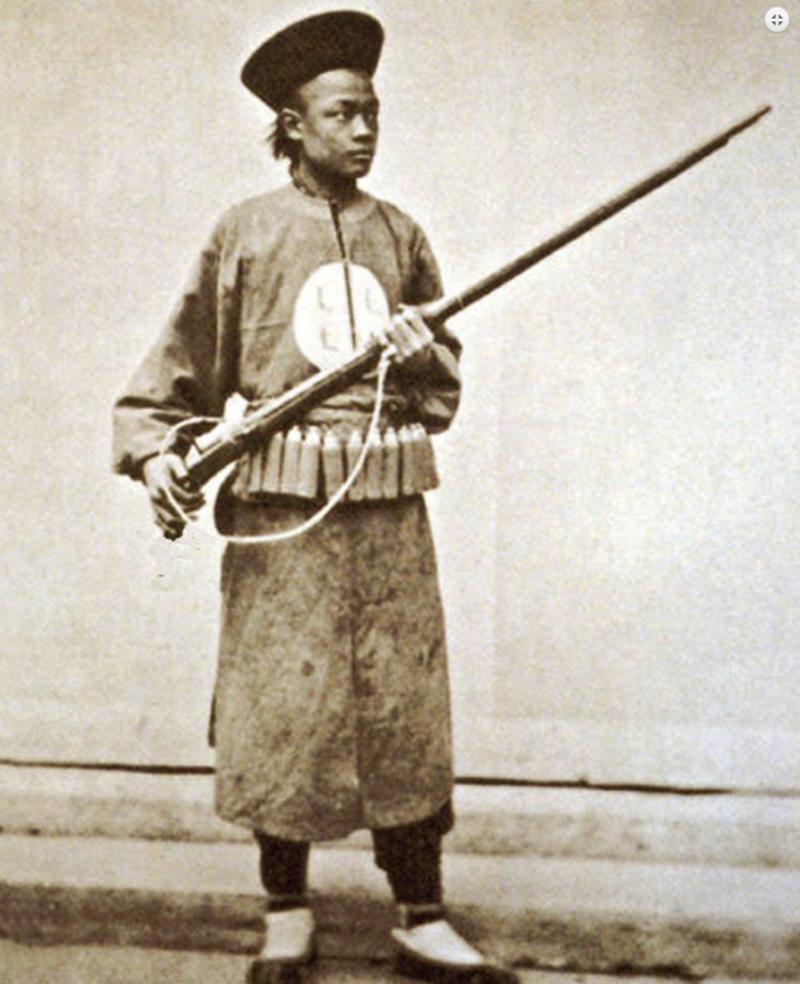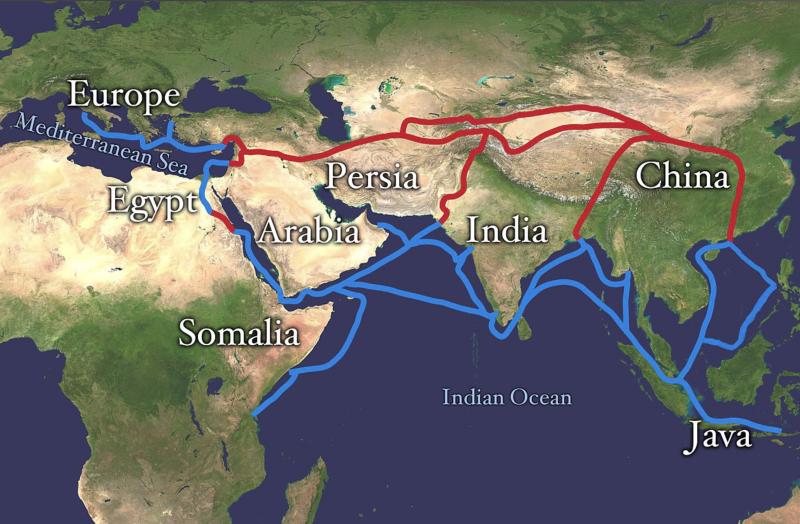18th Century Ching Dynasty Chinese Matchlock Musket Powder Flask. Qianlong {aka Chien-lung} Period
Leather covered wood with iron spout. Wooden slide at the base of the spout for opening and closing the flask to release. Very scarce to find, somewhat crude in its manufacture but typical of the time and the region within which it was used in the North West province of China and the mountains of Tibet. Somewhat similar to examples from the old Ottoman Empire, but their versions tended to have leather tooling decor. How or why the two regional types were so similar is unknown, although possibly via the *Silk Road route. Which had been the origin of trade between the East and the West for almost 2000 years
Qianlong {aka Chien lung period}, used until the Boxer Rebellion. Most likely brought back to England by a British soldier that either served in the Opium War, or defended the legations at the siege in Peking.
China pioneered the use of gunpowder for fireworks and artillery in the thirteenth and fourteenth centuries. Sophisticated firearms technology, however, developed more rapidly in Europe during the fifteenth and sixteenth centuries and was then introduced into China by merchants, diplomats, and missionaries during the seventeenth century. Improved designs for cannons and practical types of hand-held guns were eagerly promoted and officially adopted as regulation military equipment under the Qing emperors Kangxi (reigned 1662–1722) and Qianlong (reigned 1736–1795). In addition to mastering the use of bow and arrow and other weapons, both Kangxi and Qianlong owned and used guns, particularly for hunting. This was in keeping with their overall belief in the importance of martial training, which they encouraged by personal example.
Thomas Child spent from 1870 to 1889 in Beijing, and John Thompson traveled in northern China from circa 1869 to 1872. By this time period, observers noticed that soldiers were often equipped with older, antique guns. I tend to date this type to circa 1720 to the 1750’s.
The Qing dynasty (English pronunciation; Ching), officially the Great Qing, was a Manchu-led imperial dynasty of China (1636–1912) and the last imperial dynasty in Chinese history.
It emerged from the Later Jin dynasty founded by the Jianzhou Jurchens, a Tungusic-speaking ethnic group who unified other Jurchen tribes to form a new "Manchu" ethnic identity. The dynasty was officially proclaimed in 1636 in Manchuria (modern-day Northeast China and Russian Manchuria). It seized control of Beijing in 1644, then later expanded its rule over the whole of China proper and Taiwan, and finally expanded into Inner Asia. The dynasty lasted until 1912 when it was overthrown in the Xinhai Revolution. In Chinese historiography, the Qing dynasty was preceded by the Ming dynasty and succeeded by the Republic of China. The multiethnic Qing dynasty lasted for almost three centuries and assembled the territorial base for modern China. It was the largest imperial dynasty in the history of China and in 1790 the fourth-largest empire in world history in terms of territorial size. With 419,264,000 citizens in 1907, it was the most populous country in the world at the time.
*Silk Road, ancient trade route, linking China with the West, that carried goods and ideas between the two great civilizations of Rome and China. Silk went westward, and wools, gold, and silver went east. China also received Nestorian Christianity and Buddhism (from India) via the Silk Road. See image 6 in the gallery. The road inspired cellist Yo-Yo Ma to found the Silk Road Project in 1999, which explored cultural traditions along its route and beyond as a means for connecting arts worldwide across cultures.
Code: 21273
395.00 GBP

